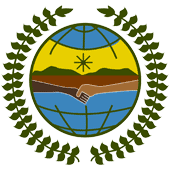United Nations Permanent Forum of Indigenous Peoples
 The UN Permanent Forum of Indigenous Peoples‘ (UNPFII) mandate is to provide advice and recommendations on Indigenous issues to the Council, to produce and disseminate information related to Indigenous issues. The Permanent Forum was created in response to feelings that the structure of the United Nations was not organized to response to issues related to Indigenous peoples and that Indigenous peoples’ representation was limited. The Permanent Forum was established with the framework of the UN International Decade of the World’s Indigenous Peoples (1995 – 2004).
The UN Permanent Forum of Indigenous Peoples‘ (UNPFII) mandate is to provide advice and recommendations on Indigenous issues to the Council, to produce and disseminate information related to Indigenous issues. The Permanent Forum was created in response to feelings that the structure of the United Nations was not organized to response to issues related to Indigenous peoples and that Indigenous peoples’ representation was limited. The Permanent Forum was established with the framework of the UN International Decade of the World’s Indigenous Peoples (1995 – 2004).
Members serve a three year term and include sixteen independent experts, eight nominated by governments and eight directly by Indigenous organizations in their regions. Regions include: Africa, Asia, Central and South America and the Caribbean, the Artic, Central and Eastern Europe, Russian Federation, Central Asia and Transcaucasia, North America, and the Pacific.
Links include:
Indigenous Women and the UN System
Indigenous women and the UNPFII
Inter-Agency Task Force on Indigenous Women
Convention on the Elimination of all Forms of Discrimination Against Women CEDAW
Second Meeting of UN Agencies and Indigenous Women representatives of Central America and Mexico
Declaration from the Indigenuos Children and Adolescents of Latin America to the 2005 Ibero-American Summit Meeting and press release
UNPFII logo image, Retrieved Nov. 17 from UNPFII website. http://www.un.org/esa/socdev/unpfii/
November 17, 2009 No Comments
Network Environments for Aboriginal Research BC
 The Network Environments for Aboriginal Research BC’s (NEARBC) mission is to provide an environment to improve the health and wellbeing of Aboriginal Peoples. Their mission is to provide a setting where researchers and community members can work together to develop research initiatives that are relevant to Aboriginal peoples. They strive to develop research projects that are competitive nationally and internationally.
The Network Environments for Aboriginal Research BC’s (NEARBC) mission is to provide an environment to improve the health and wellbeing of Aboriginal Peoples. Their mission is to provide a setting where researchers and community members can work together to develop research initiatives that are relevant to Aboriginal peoples. They strive to develop research projects that are competitive nationally and internationally.
The Aboriginal Health Abstract data base page stores research articles related to various Aborignial health issues. Categories include: mental health, diabetes, child and maternal health, injury or suicide, cardiovascular disease, chronic disease, fetal alcohol syndrome, tobacco, and infectious disease.
Featured Resources include:
Aboriginal Health Research Ethics Protocols
CIHR Guidelines for Health Research Involving Aboriginal People
Protocols & Principles for Conducting Research in a Nuu-Chah-Nulth Context
Tri-Council Policy Statement: Ethical Conduct for Research Involving Humans
NEARBC logo image, Retrieved Nov. 17 from NEARBC website. http://www.nearbc.ca/index.php
November 17, 2009 No Comments
The body and technology – mod 4 post 1
You have got to watch this, it is amazing!!!
A TED video about a technology that allows the user to use/find digital information while in her/his physical environment. The learner in the physical world interacts with digital data using physical gestures. No longer will we need desktop computers or laptops. No longer will we have to sit for hours in front of a machine interacting with a machine (computer). We can get information while interacting with our physical world.
Pranav Mistry, an MIT graduate student has created a device called the SixthSense that uses our physical gestures and interactions with real-world objects and integrates/combines them with data (digital information) for ‘just in time” knowledge building.
He hopes that this will solve the digital divide. All equipment needed is extremely cheap and the software is open source. You only need a wireless connection to the internet.
Near the end of the video he shows how his device makes working with digital data the same as working with information in a physical form (on paper)
I love it. I can hardly wait until it becomes the norm.
I think this fits in well with aboriginal pedagogy. The learner can be in the natural environment and interact with digital information at the same time.
November 17, 2009 No Comments
